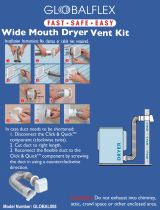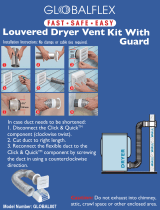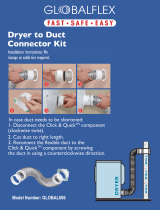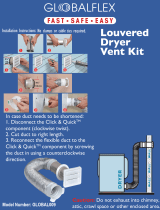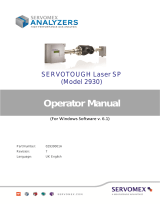Page is loading ...

MMM
I
MMMOPERATING INSTRUCTIONS
OPERATING INSTRUCTIONS
DUSTHUNTER SP30
Dust Concentration Monitor
DUSTHUNTER SP30, DUSTHUNTER SP30 LM, DUSTHUNTER SP30 DM

2
8021994/ZWO2/V1-2/2018-04| SICKOPERATING INSTRUCTIONS | DUSTHUNTER SP30
Subject to change without notice
Described product
Product name: DUSTHUNTER SP30
DUSTHUNTER SP30 LM Leakage monitor for filter check
DUSTHUNTER SP30 DM Dust monitor for filter check
Manufacturer
SICK Engineering GmbH
Bergener Ring 27 · D-01458 Ottendorf-Okrilla · Germany
Phone: +49 35205 524-10
Fax: +49 35205 524-50
E-mail: [email protected]
Trademarks
Windows is a Microsoft Corporation trademark.
Other product names used in this document may also be trademarks and are only used
for identification purposes.
Legal information
This document is protected by copyright. Any rights derived from the copyright shall be
reserved for SICK Engineering GmbH. Reproduction of this document or parts of this
document is only permissible within the limits of the legal determination of Copyright
Law.
Any modification, shortening or translation of this document is prohibited without the
express written permission of SICK Engineering GmbH.
The trademarks stated in this document are the property of their respective owner.
© SICK Engineering GmbH. All rights reserved.
Original document
This document is an original document of SICK Engineering GmbH.

Contents
3
8021994/ZWO2/V1-2/2018-04 | SICK OPERATING INSTRUCTIONS | DUSTHUNTER SP30
Subject to change without notice
1 Important Information .............................................................................. 7
1.1 Main hazards...................................................................................................7
1.1.1 Hazard through hot and/or aggressive gases and high pressure 7
1.1.2 Hazard through electrical equipment ............................................7
1.1.3 Hazards through laser beam..........................................................7
1.2 Symbols and document conventions .............................................................8
1.2.1 Warning symbols ............................................................................8
1.2.2 Warning levels and signal words....................................................8
1.2.3 Information symbols ....................................................................... 8
1.3 Intended use ................................................................................................... 8
1.4 Responsibility of user......................................................................................9
1.4.1 General information........................................................................9
1.4.2 Safety information and protective measures ................................ 9
2 Product Description.................................................................................11
2.1 Measuring principle, measured variables....................................................11
2.1.1 Functional principle ......................................................................11
2.1.2 Response time ..............................................................................12
2.1.3 Function check..............................................................................12
2.2 Device components ......................................................................................14
2.2.1 Sender/receiver unit ....................................................................16
2.2.2 Components for assembly of sender/receiver unit.....................21
2.2.2.1 Flange with tube........................................................21
2.2.2.2 Flange with quick-release fastener / 1" thread .......21
2.2.3 Optional integrated purge air unit................................................22
2.2.4 Optional external purge air unit ...................................................22
2.2.5 Adapter for instrument air supply ................................................23
2.2.6 Installation accessories................................................................23
2.2.7 Non-return valve ...........................................................................23
2.2.8 Test equipment for linearity test..................................................23
2.3 Device configuration .....................................................................................24
2.3.1 Sender/receiver unit ....................................................................24
2.4 SOPAS ET (PC program) ................................................................................24
Contents
Contents

Contents
4
8021994/ZWO2/V1-2/2018-04 | SICKOPERATING INSTRUCTIONS | DUSTHUNTER SP30
Subject to change without notice
3 Assembly and Installation......................................................................25
3.1 Project planning............................................................................................ 25
3.2 Assembly ....................................................................................................... 27
3.2.1 Fitting the flange with tube .......................................................... 27
3.2.2 Fitting Tri-Clamp welding clamps................................................. 28
3.2.3 Fitting 1" sleeve............................................................................ 28
3.2.4 Fitting dimensions in the duct .................................................... 29
3.2.5 Work to be performed .................................................................. 30
3.2.6 Adapting to the flow direction...................................................... 31
3.2.7 Fitting the components for the purge air supply......................... 32
3.2.8 Fitting to the measuring point ..................................................... 33
3.2.9 Fitting the weatherproof cover..................................................... 33
3.2.10 Fitting the optional MCU control unit .......................................... 34
3.2.11 Fitting the optional external purge air unit.................................. 35
3.2.12 Assembly work.............................................................................. 35
3.3 Electrical installation .................................................................................... 36
3.3.1 Electrical safety ............................................................................ 36
3.3.1.1 Properly installed power isolating switches............. 36
3.3.1.2 Lines with correct rating........................................... 36
3.3.1.3 Grounding the devices.............................................. 36
3.3.1.4 Responsibility for system safety .............................. 36
3.3.2 General information, prerequisites ............................................. 37
3.3.3 Electrical connection.................................................................... 37
3.3.4 Device displays / connections ..................................................... 38
3.3.5 Connecting the optional MCU control unit .................................. 39
3.3.6 Installing the purge air supply ..................................................... 39
3.3.6.1 Optional external purge air unit ............................... 39
3.3.6.2 Purging with instrument air ...................................... 40
3.3.6.3 Installing the non-return valve option...................... 42
4 Commissioning and Configuration ....................................................... 43
4.1 Basics............................................................................................................ 43
4.1.1 General information ..................................................................... 43
4.1.2 Factory settings ............................................................................ 43
4.2 Simple commissioning (without SOPAS ET)................................................. 44
4.3 Checking the purge air unit .......................................................................... 47
4.3.1 Install SOPAS ET........................................................................... 47
4.3.1.1 Password for SOPAS ET menus................................ 47
4.3.2 Connecting SOPAS to the device ................................................. 48
4.3.3 Connection to the device via USB line ........................................ 48
4.3.3.1 Finding the DUSTHUNTER COM port........................ 49

Contents
5
8021994/ZWO2/V1-2/2018-04 | SICK OPERATING INSTRUCTIONS | DUSTHUNTER SP30
Subject to change without notice
4.4 Commissioning / configuring the sender/receiver unit ..............................50
4.4.1 Selecting maintenance.................................................................50
4.4.2 Setting application parameters....................................................51
4.4.3 Modbus configuration...................................................................52
4.4.4 Filter watch....................................................................................53
4.4.5 Protocols .......................................................................................55
4.4.6 Resetting parameters...................................................................55
4.5 Measuring screen, diagnosis and control values ........................................56
4.5.1 Overview........................................................................................56
4.5.2 Device information .......................................................................56
4.5.3 Measured value output and sensor information.........................57
4.5.4 Test outputs ..................................................................................59
4.5.5 Calibration for dust concentration measurement .......................60
4.5.6 Data backup in SOPAS ET ............................................................62
5 Maintenance.............................................................................................63
5.1 General information ......................................................................................63
5.2 Maintenance on the sender/receiver unit ...................................................65
5.2.1 Cleaning the optics of the sender/receiver unit..........................65
5.2.2 Checking laser alignment.............................................................66
5.3 Maintenance of the purge air supply ...........................................................68
5.3.1 Integrated purge air unit ..............................................................68
5.3.2 Optional external purge air unit ...................................................69
5.4 Shutdown.......................................................................................................70
6 Troubleshooting .......................................................................................71
6.1 General information ......................................................................................71
6.2 Warnings and failures of the sender/receiver unit .....................................72
6.2.1 Warnings .......................................................................................72
6.2.2 Failures..........................................................................................73
6.3 Repairs ..........................................................................................................74
6.3.1 Replacing the cover ......................................................................74
6.3.2 Replacing the protective tube for NL 180 and 280 ....................75
6.3.3 Replacing the protective tube for NL 435 and 735 ....................75
6.3.4 Replacing the mainboard .............................................................75
6.3.5 Setting the laser alignment ..........................................................77
6.3.6 Replacing the laser .......................................................................77

Contents
6
8021994/ZWO2/V1-2/2018-04 | SICKOPERATING INSTRUCTIONS | DUSTHUNTER SP30
Subject to change without notice
7 Specifications...........................................................................................80
7.1 Compliances ................................................................................................. 80
7.2 Approvals ...................................................................................................... 80
7.3 Technical Data .............................................................................................. 81
7.4 Dimensions, item numbers .......................................................................... 83
7.4.1 Sender/receiver unit .................................................................... 83
7.4.2 Fitting elements............................................................................ 89
7.4.3 Optional MCU control unit............................................................ 90
7.4.4 Optional external purge air unit ................................................... 91
7.4.5 Weatherproof covers.................................................................... 92
7.5 Accessories ................................................................................................... 93
7.5.1 Connections for sender/receiver unit ......................................... 93
7.5.2 Purge air supply............................................................................ 93
7.5.3 Assembly parts ............................................................................. 93
7.5.4 Accessories for linearity test........................................................ 93
7.6 Consumable parts for 2-year operation....................................................... 94
7.7 Spare parts ................................................................................................... 94
7.7.1 Sender/receiver unit .................................................................... 94
7.7.2 Purge air supply............................................................................ 94

7
8021994/ZWO2/V1-2/2018-04| SICK OPERATING INSTRUCTIONS | DUSTHUNTER SP30
Subject to change without notice
IMPORTANT INFORMATION 1
1 Important Information
1.1 Main hazards
1.1.1 Hazard through hot and/or aggressive gases and high pressure
The optical subassemblies are fitted directly on the gas-carrying duct. On equipment with
low hazard potential (no danger to health, ambient pressure, low temperatures), the
installation or removal can be performed while the equipment is in operation providing the
valid regulations and equipment safety notices are observed and suitable protective
measures are taken.
1.1.2 Hazard through electrical equipment
1.1.3 Hazards through laser beam
WARNING: Danger from exhaust gas
▸ On equipment with gases detrimental to health, high pressure or high
temperatures, the sender/receiver unit fitted on the duct may only be
installed/removed when the equipment is at a standstill.
WARNING: Danger through power voltage
The DUSTHUNTER SP30 measuring system is classified as electrical.
▸ Disconnect power supply lines before working on power connections or
parts carrying power voltage.
▸ Refit any contact protection removed before switching the power voltage
back on again.
WARNING: Hazards through laser beam
▸ Never look directly into the beam path.
▸ Do not point the laser beam at persons.
▸ Pay attention to laser beam reflections.

8
8021994/ZWO2/V1-2/2018-04| SICKOPERATING INSTRUCTIONS | DUSTHUNTER SP30
Subject to change without notice
1 IMPORTANT INFORMATION
1.2 Symbols and document conventions
1.2.1 Warning symbols
1.2.2 Warning levels and signal words
DANGER
Risk or hazardous situation which will result in severe personal injury or death.
WARNING
Risk or hazardous situation which could result in severe personal injury or death.
CAUTION
Hazard or unsafe practice which could result in less severe or minor injuries.
NOTICE
Hazard which could result in property damage.
1.2.3 Information symbols
1.3 Intended use
Purpose of the device
The DUSTHUNTER SP30 measuring system only serves continuous measurement of dust
concentrations in exhaust gas and exhaust air plants.
Correct use
▸ Use the device only as described in these Operating Instructions. The manufacturer
bears no responsibility for any other use.
▸ Observe all measures necessary for conservation of value, e.g., for maintenance and
inspection and/or transport and storage.
● Do not remove, add or modify any components to or on the device unless described and
specified in the official manufacturer information. Otherwise
– the device could become dangerous
– the manufacturer’s warranty becomes void
Restrictions of use
● The DUSTHUNTER SP30 measuring system is not approved for use in potentially
explosive atmospheres.
Symbol Significance
Hazard (general)
Hazard by voltage
Symbol Significance
Important technical information for this product
Important information on electric or electronic functions

9
8021994/ZWO2/V1-2/2018-04| SICK OPERATING INSTRUCTIONS | DUSTHUNTER SP30
Subject to change without notice
IMPORTANT INFORMATION 1
1.4 Responsibility of user
1.4.1 General information
Designated users
The DUSTHUNTER SP30 measuring system may only be installed and operated by skilled
technicians who, based on their technical training and knowledge as well as knowledge of
the relevant regulations, can assess the tasks given and recognize the hazards involved.
Special local conditions
▸ Observe the valid legal regulations as well as the technical rules deriving from
implementation of these regulations applicable for the respective equipment during work
preparation and performance.
▸ Carry out work according to the local conditions specific for the equipment as well as
operational hazards and regulations.
Keeping documents
Keep the Operating Instructions belonging to the measuring system as well as equipment
documentation onsite for reference at all times. Pass the respective documentation on to
any new owner of the measuring system.
1.4.2 Safety information and protective measures
Protection devices
Behavior during a purge air failure
The purge air supply serves to protect optical subassemblies fitted on the duct against hot
or aggressive gases. Leave the supply switched on when the equipment is at a standstill.
Optical subassemblies can be severely damaged in a short time if the purge air supply fails.
Preventive measures for operating safety
NOTE:
Depending on the particular hazard potential, an adequate number of suitable
protection devices and personal safety equipment must be available and used
by the personnel.
NOTE:
If no quick-release shutters are available:
The user must ensure that:
▸ The purge air supply runs reliably and continuously
▸ Failure of the purge air supply is immediately detected (e.g., by using
pressure monitors)
▸ Optical subassemblies are removed from the duct if the purge air supply
fails and the duct opening is closed off (e.g. with a flange cover).
NOTE:
The user must ensure that:
▸ Neither failures nor erroneous measurements can lead to operational states
that can cause damage or become dangerous
▸ The specified maintenance and inspection tasks are carried out regularly by
qualified, experienced personnel.

10
8021994/ZWO2/V1-2/2018-04| SICKOPERATING INSTRUCTIONS | DUSTHUNTER SP30
Subject to change without notice
1 IMPORTANT INFORMATION
Recognizing failures
Every deviation from normal operation is to be regarded as a serious indication of a
functional impairment. These are, amongst others:
● Warning indications
● Significant drifts in measured results
● Increased power consumption
● Higher temperatures of system components
● Monitoring devices triggering
● Smells or smoke emission
● Heavy contamination.
Avoiding damage
Electric connection
Ensure the device can be switched off with a power isolating switch/circuit breaker in
accordance with EN 61010-1.
NOTE:
In order to avoid failures that can cause direct or indirect personal injury or
property damage, the operator must ensure:
▸ The responsible maintenance personnel are present at any time and as fast
as possible
▸ The maintenance personnel are adequately qualified to react correctly to
failures of the measuring system and any resulting operational interruptions
(e.g., when used for measurement and control purposes)
▸ The malfunctioning equipment is switched off immediately in case of doubt
and that switching off does not cause collateral failures.

11
8021994/ZWO2/V1-2/2018-04| SICK OPERATING INSTRUCTIONS | DUSTHUNTER SP30
Subject to change without notice
PRODUCT DESCRIPTION 2
2 Product Description
2.1 Measuring principle, measured variables
2.1.1 Functional principle
The measuring system works according to the scattered light measurement principle
(forward dispersion). A laser diode beams the dust particles in the gas flow with modulated
light in the visual range (wavelength approx. 650 nm). A highly sensitive detector registers
the light scattered by the particles, amplifies the light electrically and feeds it to the
measuring channel of a microprocessor as central part of the measuring, control and
evaluation electronics. The measuring volume in the gas duct is defined through the
intersection of the sender beam sent and the receive aperture.
Continuous monitoring of the sender output registers the smallest changes in brightness of
the light beam sent which then serves to determine the measurement signal.
Fig. 1: Measuring principle
Approx. 15°
Sender/receiver unit
Gas duct
Receiver
Measuring volume
Sender

12
8021994/ZWO2/V1-2/2018-04| SICKOPERATING INSTRUCTIONS | DUSTHUNTER SP30
Subject to change without notice
2 PRODUCT DESCRIPTION
Determining the dust concentration
Measured scattered light intensity (SI) is proportional to dust concentration (c). Scattered
light intensity not only depends on the number and size of particles but also on the optical
characteristics of the particles and therefore the measuring system must be calibrated
using a gravimetric comparison measurement for exact dust concentration measurement.
The calibration coefficients determined can be entered directly in the measuring system as
c = cc2
· SI² + cc1 · SI + cc0
(Entry, see “Calibration for dust concentration measurement”, page 60; standard factory
setting: cc2 = 0, cc1 = 1, cc0 = 0).
2.1.2 Response time
The response time is the time required to attain 90% of the signal peak after a sudden
change in the measurement signal. It can be set anywhere between 0.1 and 600 s. As the
response time increases, transient measured value fluctuations and interruptions are
damped stronger and stronger which “smoothes out” the output signal.
Fig. 2: Response time
2.1.3 Function check
A function check can be triggered at fixed intervals as from a definable starting timepoint
for an automatic function check of the measuring system. The setting can be made using
the SOPAS ET operating program (see “Setting application parameters”, page 51). Any
unallowed deviations from normal behavior that may occur are signaled as errors. A
function check triggered manually can help localize possible error causes should a device
failure occur.
During the check cycle of the DUSTHUNTER SP30, the linearity of the measurement is
checked. The check cycle takes approx. 200 s and comprises:
● Approx. 20 s measurement of zero and control value
● Output of the determined values for 180 s (can be deactivated via SOPAS ET)
100
98
96
94
92
90
88
86
84
Response time
t in s
Measured value with response time
90% of the signal peak
Process change
0 10 20 30 40 50 60 70 80 90
Measured value in %

13
8021994/ZWO2/V1-2/2018-04| SICK OPERATING INSTRUCTIONS | DUSTHUNTER SP30
Subject to change without notice
PRODUCT DESCRIPTION 2
Fig. 3: Function check output on a plotter
Zero value measurement
The sender diode is switched off for zero point control so that no signal is received. This
means possible drifts or zero point deviations are detected reliably in the overall system
(e.g., due to an electronic defect). An error signal “Zero value” is generated when the “zero
value” is outside the specified range.
Control value measurement (span test)
Sender beam intensity changes between 70 and 100% during control value determination.
The light intensity received is compared against the standard value (70%). The measuring
system generates an error signal “Span test” for deviations greater than ±2%. The error
message is cleared again when the next function check runs successfully. The control
value is determined with high precision through statistical evaluation of a high number of
intensity changes.
Start
Check cycle
Zero value output
(Live Zero)
Paper feed
Control value output
End of function check
Live zero Control value
(70% value, span)
● Activate the “Enable analog output check values” to output control values via the
analog output
(see “Setting application parameters”, page 51).
● The value measured last is output on the analog output during control value
determination.
● If the control values are not output on the analog output, the current measured value
is output when control value determination has completed.
● A function check is not started automatically when the measuring system is in
“Maintenance” mode.
● Changes to the interval time are first effective after the next start timepoint.

14
8021994/ZWO2/V1-2/2018-04| SICKOPERATING INSTRUCTIONS | DUSTHUNTER SP30
Subject to change without notice
2 PRODUCT DESCRIPTION
2.2 Device components
Device variants
● Measuring system DUSTHUNTER SP30 for use in ducts with a diameter larger than
150 mm. The DUSTHUNTER SP30 can be fitted to a flange with quick-release fastener
(Tri-Clamp®) or to the duct with a 1" thread.
● Measuring system DUSTHUNTER SP30 for use in ducts with a diameter larger than
250 mm. Fitting on the duct is done with a flange with tube.
Measuring system DUSTHUNTER SP30 comprises the components:
● Sender/receiver unit
● Connection line for connecting the sender/receiver unit to 24V voltage supply onsite and
output of data on the analog output and Modbus via RS485 interface
● Assembly components: Flange with tube, 1" thread or flange with quick-release fastener
Tri-Clamp
● Option MCU control unit (see Section 3.3.4 in Operating Instructions SP100)
● Option Purge air unit:
Internal duct
pressure
[hPa ]
Connection and supply components
Purge air Voltage
-50 ... +10 Option with integrated purge air unit 24 V DC (from device)
-50 ... +30 Optional external purge air unit + purge air reduction Onsite
[1]
[1] External purge air available in various variants matching the respective local network, see “Installing the
purge air supply”, page 39
-50 ... +100 Adapter for instrument air
[2]
[2] Instrument air onsite (free of dust, oil, moisture, non-corrosive)
---

15
8021994/ZWO2/V1-2/2018-04| SICK OPERATING INSTRUCTIONS | DUSTHUNTER SP30
Subject to change without notice
PRODUCT DESCRIPTION 2
Fig. 4: Device components DUSTHUNTER SP30 (flange version shown)
External voltage supply*
Operating and parameter program SOPAS ET
Sender/receiver unit
MCU (option)***
Flange with tube **
Purge air hose
Duct
Digital inputs
External purge air unit (option)
Digital outputs, analog outputs
* Not required when optional MCU is present *** Information on request
** Tri-Clamp and 1" thread version not shown
DI3 Calibration curve switching
DI4 Filter watch
DO1 Operation/failure
DO2 Limit value
DO3
Warning/maintenance/
function check (selectable)
DI1 Maintenance/operation
DI2 Filter measurement/function check
AO
Analog output
4 ... 20 mA
Modbus
Connection on plug connector 1
Connection on plug connector 2
Connection on plug connector 3
Purge air hose
● DN25 with integrated blower
● DN40 to the external purge air unit
(and purge air reducer)

16
8021994/ZWO2/V1-2/2018-04| SICKOPERATING INSTRUCTIONS | DUSTHUNTER SP30
Subject to change without notice
2 PRODUCT DESCRIPTION
2.2.1 Sender/receiver unit
The sender/receiver unit comprises two main subassemblies:
● Electronics unit
It contains the optical and electronics subassemblies to send and receive the light beam
as well as to process and evaluate the signals.
● Measuring probe
The measuring probe is available in different versions and nominal lengths and defines
the device variant (see “Device configuration”, page 24).
Data transfer and voltage supply (24 V DC) of the sender/receiver unit run via a shielded
line with 7 wires with plug connector. A second connection with a RS485 interface is
available for service work or connection of an MCU. A third connection allows additional
functionality. Detailed information on assignment, see “Interfaces and I/O”, page 19.
Clean air to cool the probe and keep the optical surfaces clean is fed via a purge air
connection.
The current device state (operation/failure, maintenance/maintenance request) is signaled
on the rear side of the enclosure (green = operation, red = failure, yellow = maintenance)
and is available via Modbus and viewable in SOPAS.
The enclosure with fitted sender/receiver unit can be swiveled to the side after the quick-
release fasteners have been loosened. Optics, electronics and mechanical components
can then be easily accessed for maintenance work.
Basic variants
Type Description
DUSTHUNTER SP30 TÜV type examination
DUSTHUNTER SP30 LM Leakage monitor for filter check (according to DIN EN 15859)
DUSTHUNTER SP30 DM Dust monitor for filter check (according to DIN EN 15859)

17
8021994/ZWO2/V1-2/2018-04| SICK OPERATING INSTRUCTIONS | DUSTHUNTER SP30
Subject to change without notice
PRODUCT DESCRIPTION 2
Type code
The various configuration options are defined by the basic variant and the type code which
is made up as follows:
Device identification type: DHSP30 - T 2 V 2 F NN NN NNXX S
DUSTHUNTER scattered light measurement probe
- T: Sender/receiver unit
Probe material resistance
- 2: 220°C
- 4: 400°C
Material
- V: Probe + protective tube, stainless steel
- K: Probe + protective tube, non-corrosive coating
- X: Special version
Nominal length (NL)
- A: 180 mm
- B: 280 mm
- 1: 435 mm
- 2: 735 mm
- 3: 1035 mm
- X: Special version
Version
- F: Flange with tube
- T: Tri-Clamp
- G: 1" thread
- X: Special version
Purge air supply
- N: Without
- P: With integrated purge air
- X: Special version
Display
- N: Without
- D: With integrated display
- X: Special version
Approval
- NN: Without
- DM: Dust monitor for filter check
- LM: Leakage monitor for filter check
- SS: Special version
Ex identification
- NNXX: Without
Special and sample devices
- S: Standard
- X: Special device
- M: Sample device

18
8021994/ZWO2/V1-2/2018-04| SICKOPERATING INSTRUCTIONS | DUSTHUNTER SP30
Subject to change without notice
2 PRODUCT DESCRIPTION
Interfaces of the sender/receiver unit
The following interfaces are available directly on the sender/receiver unit.
Analog output (1x)
0/2/4 ... 20 mA
Relay outputs
Contact load 48 V, 1 A;
Digital input Service / MCU
Interface
for output of the
measured variable dust
concentration
for output of the status
signals:
● Operation/failure
● Limit value
● Warning/
maintenance/
function check
(selectable)
e.g. for selecting
maintenance, function
check,
linearity test, calibration
curve switching, filter
watch synchronizing
signal
for configuration via the
operating program
SOPAS ET or connection
of an MCU
NOTE:
Always use a weatherproof cover for use outdoors. This prevents rainwater
entering (see “Weatherproof covers”, page 92).

19
8021994/ZWO2/V1-2/2018-04| SICK OPERATING INSTRUCTIONS | DUSTHUNTER SP30
Subject to change without notice
PRODUCT DESCRIPTION 2
Fig. 5: Interfaces and I/O
External power supply 24 V
(provided by customer)
AO1: Analog output 4 ... 20 mA
Modbus RTU via RS485 for transferring
measured values
Plug connector 1 (7-pole)
I/O connections
(required when digital I/O
necessary)
DI3: Digital input 3
(2-calibration curve switching)
DI4: Digital input 4
(Synchronizing signal for filter watch)
Relay 1: Failure / operation
Relay 2: Limit value
Relay 3: Warning / maintenance /
function check
(selectable)
COM: Gnd
Virtual COM port
(USB)
Plug connector 2 (7-pole)
Plug connector 3
(service 5-pole)
RS485 SOPAS
2-pole
3-pole
Service via RS485
(adapter required)
MCU with and without
purge air supply
DI1:
Digital input 1
DI2:
Digital input 2
0
Operation
1
Maintenance
0
Operation
1
Automatic function check
(operation must be active in DI1)
Linearity check (with reference filter)
(maintenance must be active in DI1)
2-pole
2-pole
2-pole
1-pole
1-pole
4-pole
Only ONE variant is always
connected, but changeable in
operation

20
8021994/ZWO2/V1-2/2018-04| SICKOPERATING INSTRUCTIONS | DUSTHUNTER SP30
Subject to change without notice
2 PRODUCT DESCRIPTION
Device variants
Fig. 6: Sender/receiver unit device variants
Electronics unit
Cleaning opening for sender optics
Duct wall
Measuring probe
Measuring opening
Probe head with receiver optics
Voltage supply connections, digital
input and outputs, analog outputs,
connection for connection cable to
MCU (option)
Purge air connection
Tri-Clamp
1" thread
à
Flange with tube
á
Protective tube
Sender/receiver unit, standard version Tri-Clamp, nominal length 180 / 280 mm
Sender/receiver unit, standard version, 1" thread, nominal length 180 / 280 mm
Nominal length
Sender/receiver unit, standard version, flange with tube, nominal length 435 / 735 mm
Nominal length
à
Nominal length
á
/
